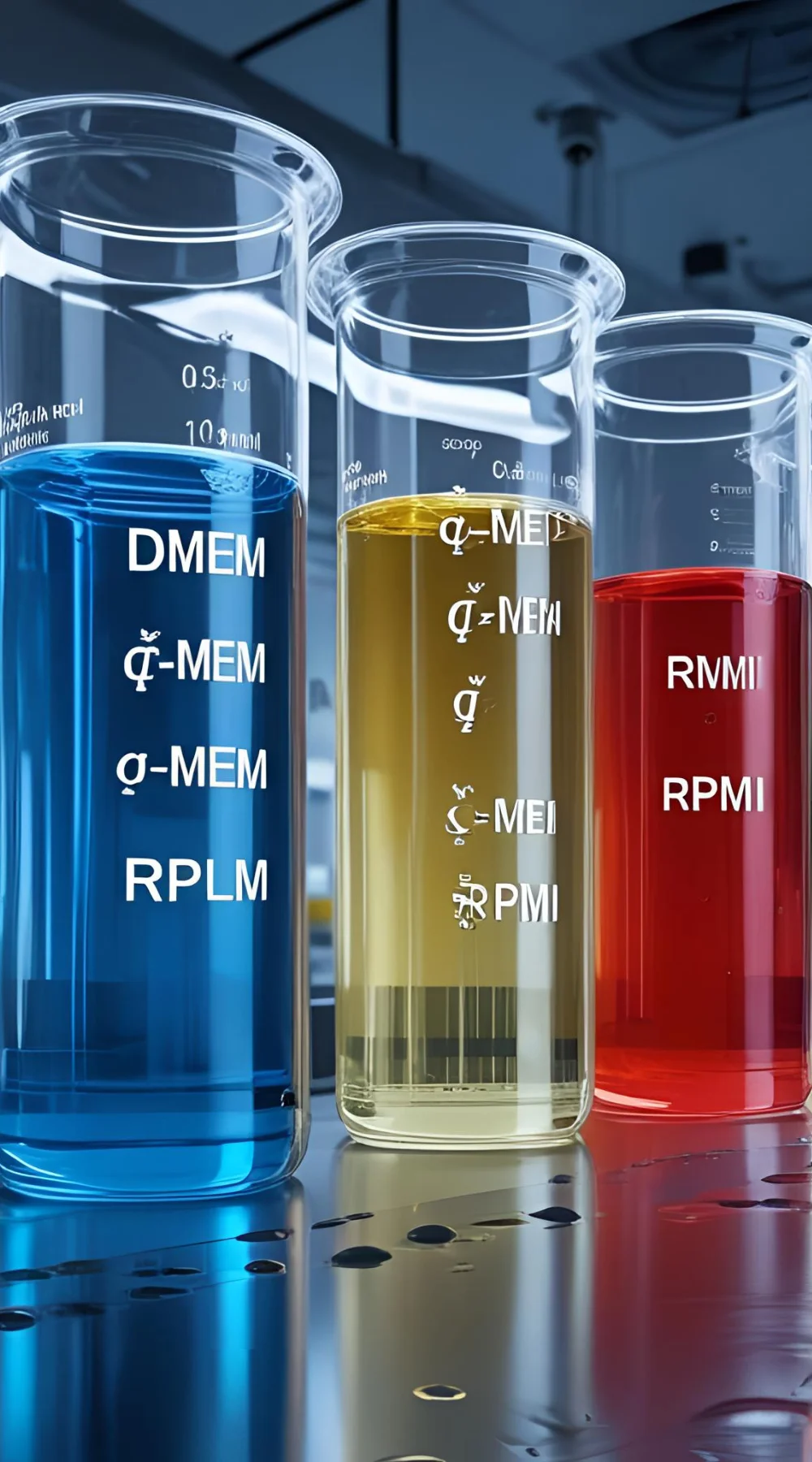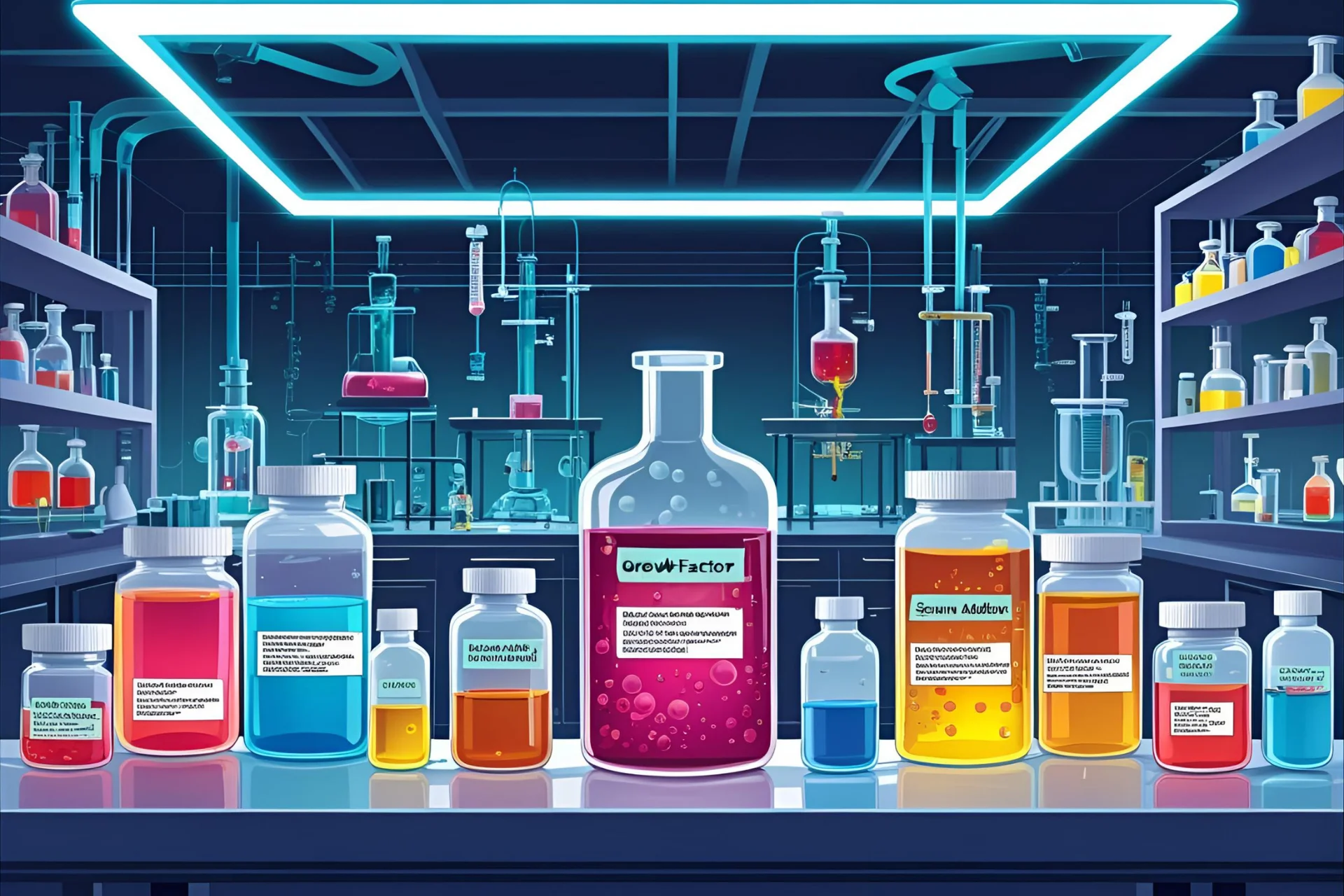Mesenchymal Stem Cell Media – Complete Guide to MSC Culture
Mesenchymal stem cell media is a specialized nutrient-rich solution designed to support the growth, viability, and differentiation potential of mesenchymal stem cells (MSCs) in a laboratory setting. Unlike standard cell culture media, MSC-specific media is carefully formulated to maintain the unique characteristics of MSCs during in vitro expansion, such as their multipotency and fibroblast-like morphology.
This media plays a critical role in creating the optimal environment for MSC proliferation, ensuring cells remain healthy and functionally active throughout the culture process. Commonly used basal media for MSC culture include Dulbecco’s Modified Eagle Medium (DMEM) and Minimum Essential Medium Alpha (α-MEM), often supplemented with essential nutrients, growth factors, and sometimes serum or serum alternatives, depending on the application.
Key Components of MSC Culture Medium
Mesenchymal stem cell media is carefully formulated to support MSC growth, viability, and function in vitro. It typically includes a basal medium, essential nutrients, and bioactive additives that together create the optimal environment for cell expansion and maintenance. Below are the core components that make up an effective MSC culture system.

Basal Media (DMEM, α-MEM, RPMI)
Basal media forms the foundation of any mesenchymal stem cell culture system. Among the most commonly used types are Dulbecco’s Modified Eagle Medium (DMEM) and Minimum Essential Medium Alpha (α-MEM). These solutions provide essential nutrients like amino acids, glucose, and vitamins that support cell metabolism and proliferation.
DMEM, known for its high glucose content, is ideal for promoting rapid MSC growth in vitro, while α-MEM offers a more balanced composition suitable for maintaining MSC morphology and differentiation potential.
Although RPMI 1640 is less frequently used for MSCs, it may be selected for specific experimental conditions. Choosing the right basal medium is a key factor in optimizing MSC expansion and preserving cell functionality.Supplements (L-Glutamine, HEPES Buffer)
To enhance the performance of basal media, certain supplements are added to support MSC viability and stability.
L-glutamine is a vital nutrient that fuels cellular energy metabolism and protein synthesis. However, due to its instability in solution, it’s often provided in stabilized forms such as GlutaMAX™ to maintain consistent cell culture conditions.
Another critical supplement is the HEPES buffer, which helps regulate pH levels in the culture environment, especially during temperature and CO₂ fluctuations.
These components are essential for MSC media optimization, ensuring cells can thrive in controlled, reproducible conditions.
Growth Factors and Serum Additives
Growth factors and serum-based additives play a pivotal role in stimulating MSC proliferation and maintaining their stemness.
Traditionally, Fetal Bovine Serum (FBS) has been widely used as a rich source of hormones, proteins, and nutrients. However, concerns about immunogenicity and batch variability have led to the development of FBS alternatives for MSCs, such as human platelet lysate (hPL), which offers a xeno-free solution more suitable for clinical-grade applications.
These alternatives reduce the risk of animal-derived contaminants and are often used in Good Manufacturing Practice (GMP) environments. Whether using FBS or hPL, the choice of additive significantly affects MSC behavior, making it a critical consideration in culture media formulation.

Serum-Free and Xeno-Free MSC Media
As mesenchymal stem cells (MSCs) move from lab research to clinical applications, the need for safer, more standardized culture conditions has led to the rise of serum-free and xeno-free MSC media. Unlike traditional formulations that rely on animal-derived components like Fetal Bovine Serum (FBS), serum-free media eliminate variability and reduce the risk of immune reactions or contamination. These formulations are especially important for therapies intended for human use, where consistency and safety are critical.
Xeno-free culture systems, which exclude all animal-origin materials, are often paired with chemically defined media formulations where every component is known and controlled. This not only improves reproducibility but also helps meet Good Manufacturing Practice (GMP) standards required for clinical-grade MSC expansion.
Several leading biotech companies provide commercially available, GMP-compliant MSC media. Brands like Gibco, Lonza, Thermo Fisher Scientific, and Stemcell Technologies offer a range of serum-free and xeno-free products tailored for reliable mesenchymal stem cell culture, ensuring high viability and retention of MSC properties without the risks associated with animal-derived additives.
Maintaining MSC Characteristics During Culture
During in vitro expansion, mesenchymal stem cells (MSCs) must retain their identity, multipotency, and surface marker profile. Using the correct MSC media formulation is essential to preserve these characteristics across multiple passages like in clinical or GMP-compliant settings.
Key Factors That Help Maintain MSC Identity:
Preservation of Surface Markers
High-quality media supports stable expression of key MSC markers such as CD105, CD73, and CD90, while suppressing unwanted markers like CD45, CD34, and HLA-DR.
Following ISCT Guidelines
The International Society for Cell and Gene Therapy (ISCT) defines the criteria for MSC characterization, including morphology, adherence to plastic, and marker expression. Adhering to ISCT protocols ensures consistency and quality across labs.
Minimizing Variability
Use of serum-free or chemically defined media helps reduce batch-to-batch differences and supports reproducible cell behavior.
Controlled Culture Conditions
Proper temperature, CO₂ levels, and passaging techniques combined with optimized media support long-term MSC expansion without loss of function or phenotype.
Best Practices for MSC Media Optimization
Optimizing mesenchymal stem cell (MSC) media is essential for achieving consistent cell growth, preserving phenotype, and ensuring suitability for research or clinical use. By fine-tuning the choice of basal media, supplements, and culture conditions, researchers can improve reproducibility and maximize MSC quality throughout expansion.
Choosing the Right Basal Media
Reducing Variability
GMP-Grade Media
MSC Culture Protocol
Culturing mesenchymal stem cells (MSCs) involves a precise, step-by-step process designed to maintain cell viability, promote expansion, and preserve phenotypic identity.
The process begins with seeding MSCs in a suitable culture vessel pre-coated for cell adhesion. A carefully selected basal medium typically DMEM or α-MEM is used as the foundation, enriched with L-glutamine, HEPES buffer, and additional cell culture supplements to support metabolism and pH stability.
To further stimulate growth and maintain stemness, growth factors and either FBS, human platelet lysate (hPL), or serum-free alternatives are added, depending on the desired application. Cells are incubated under controlled conditions usually at 37°C with 5% CO₂ while media is changed every 2–3 days to remove waste and replenish nutrients. Once MSCs reach 70–90% confluency, they are passaged using enzymatic detachment and reseeded at appropriate densities.
Throughout the expansion process, strict aseptic technique and consistent monitoring of morphology and surface marker expression (e.g., CD105, CD73, CD90) are essential to ensure high-quality, reproducible results for both research and clinical use.
Future of Mesenchymal Stem Cell Media
As regenerative medicine continues to evolve, so does the need for safer, more standardized, and scalable MSC culture systems. One of the most significant trends is the shift toward xeno-free and serum-free MSC media, which eliminate animal-derived components and reduce the risk of immune reactions or contamination. These formulations are crucial for clinical-grade applications where consistency, traceability, and regulatory compliance are mandatory.
Chemically defined media are also gaining momentum, offering complete transparency in composition and improved batch-to-batch reproducibility. Advances in bioengineering are enabling the development of personalized MSC media, tailored to specific donor cell profiles or therapeutic applications. These innovations aim to enhance not only the safety and scalability of MSC culture but also its precision, ensuring optimal outcomes in both research and patient-specific treatments.